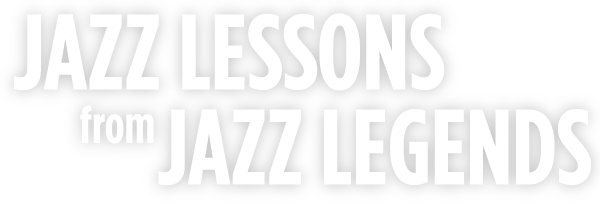Last year I made a video called “What is Voicing?” that discusses the necessity of knowing the melody in any chords that we are playing, and being sure that we are projecting it clearly at all times. This is something that all great pianists do very consciously, and in the video I used examples from five of my personal favorite pianists (Oscar Peterson, Ahmad Jamal, Keith Jarrett, Brad Mehldau and Bill Evans) projecting melodies in different ways from within chords. Check it out here:
I’ve gotten several questions about the version of “All the Things You Are” at the end of the video, particularly about the chords in the bridge. What I meant to illustrate is that as long as a melody is clear, its harmony could be literally anything. And in the bridge I was actually harmonizing the melody with completely random notes – so please don’t apply any harmonic analysis to it! Even though many of the chords in the bridge were “wrong”, the song was still clear because of the way the melody was being projected. Also in the “A” sections, the harmony was purposely simple, to demonstrate that even simple triads and seventh chords actually work very well if there is a well projected (or well “voiced”) melody that the listener can follow.
For another example of this, here’s two versions of the first 8 bars of “Body and Soul”. In the first version, the melody will be harmonized with very simple versions of the chords: just root position triads and seventh chords with no alterations, but with the melody clearly projected and guiding the phrase. This is to demonstrate that “fancy” chords don’t necessarily improve our playing. And in the second version, the melody is harmonized with random dissonant clusters. These harmonies are literally random, without regard for the changes at all. But physically the melody is being projected in way that even though the harmonies are “wrong”, the interpretation still “works”. PDF’s of both of these versions are available below, so you can try and play the same notes and project the melody the same way.
PDFs
Body and Soul 1
Body and Soul 2
In jazz piano education, the focus tends to be on what we are playing, but rarely on how we are playing it – but the “how” really throws a wrench in everything. We could be playing the best notes in the world, but if we haven’t considered how they need to be played, they won’t work. On the other hand, we could play nothing but “wrong” notes, but if the details of how we are playing them are in order, they will work perfectly. We all know the feeling of playing a perfectly “good” solo, with all of the chord changes played accurately and with “good” time, but still lacking effectiveness; still not really bringing the piano to life. Getting over this plateau has to do with getting away from the what of our playing, and into the fine details of how – and thinking about “voicing” is one step in that direction.
-Glenn
Check out Glenn Zaleski’s latest album:
Stranahan/Zaleski/Rosato – Live at Jazz Standard


